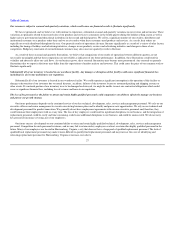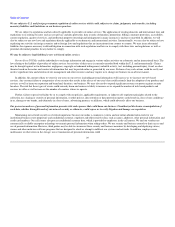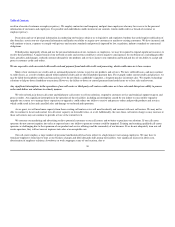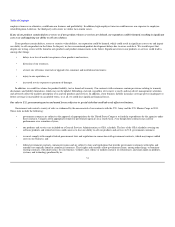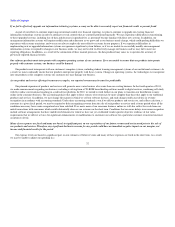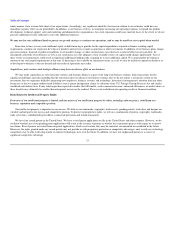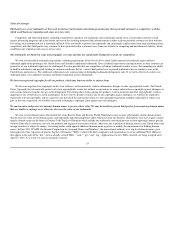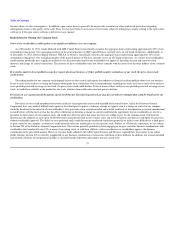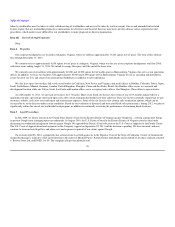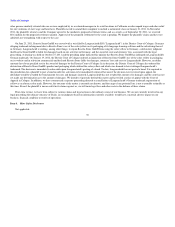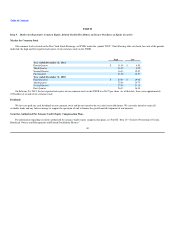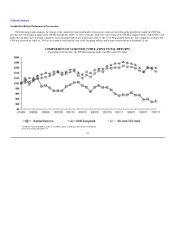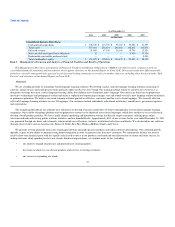Rosetta Stone 2011 Annual Report Download - page 38
Download and view the complete annual report
Please find page 38 of the 2011 Rosetta Stone annual report below. You can navigate through the pages in the report by either clicking on the pages listed below, or by using the keyword search tool below to find specific information within the annual report.
Table of Contents
rights to all potentially relevant domain names in the United States or in other countries in which we conduct business, which could harm our business or
reputation. Moreover, attempts may be made to register our trademarks as new TLDs and we will have to make efforts to enforce our rights against such
registration attempts.
Claims that we misuse the intellectual property of others could subject us to significant liability and disrupt our business.
We may become subject to material claims of infringement by competitors and other third parties with respect to current or future products, e-commerce
and other web-related technologies, online business methods, trademarks or other proprietary rights. Our competitors, some of which may have substantially
greater resources than we have and they have made significant investments in competing products and technologies, may have, or seek to apply for and
obtain, patents, copyrights or trademarks that will prevent, limit or interfere with our ability to make, use and sell our current and future products and
technologies, and we may not be successful in defending allegations of infringement of these patents, copyrights or trademarks. Further, we may not be aware
of all of the patents and other intellectual property rights owned by third parties that may be potentially adverse to our interests. We may need to resort to
litigation to enforce our proprietary rights or to determine the scope and validity of a third-party's patents or other proprietary rights, including whether any of
our products, technologies or processes infringe the patents or other proprietary rights of third parties. We may incur substantial expenses in defending against
third-party infringement claims regardless of the merit of such claims. The outcome of any such proceedings is uncertain and, if unfavorable, could force us to
discontinue sales of the affected products or impose significant penalties or restrictions on our business. We do not conduct comprehensive patent searches to
determine whether the technologies used in our products infringe upon patents held by others. In addition, product development is inherently uncertain in a
rapidly evolving technological environment in which there may be numerous patent applications pending, many of which are confidential when filed, with
regard to similar technologies.
We do not own all of the software, other technologies and content used in our products and services.
Some of our products and services include intellectual property owned by third parties, including software that is integrated with internally developed
software and a portion of our voice recognition software, which we license from the University of Colorado. From time to time we may be required to
renegotiate with these third parties or negotiate with new third parties to include their technology or content in our existing products, in new versions of our
existing products or in wholly new products. We may not be able to negotiate or renegotiate licenses on commercially reasonable terms, or at all, and the
third-party software may not be appropriately supported, maintained or enhanced by the licensors. If we are unable to obtain the rights necessary to use or
continue to use third-party technology or content in our products and services, the inability to support, maintain and enhance any software could result in
increased costs, or in delays or reductions in product shipments until equivalent software could be developed, identified, licensed and integrated.
Our use of open source software could impose limitations on our ability to commercialize our products.
We incorporate open source software into our products and may use more open source software in the future. The use of open source software is
governed by license agreements. The terms of many open source licenses have not been interpreted by U.S. courts, and there is a risk that these licenses could
be construed in a manner that could impose unanticipated conditions or restrictions on our ability to commercialize our products. In such event, we could be
required to seek licenses from third parties in order to continue offering our products, make generally available, in source code form, proprietary code that
links to certain open source modules, re-engineer our products, discontinue the sale of our products if re-engineering could not be accomplished on a cost-
effective and timely basis, or
36



